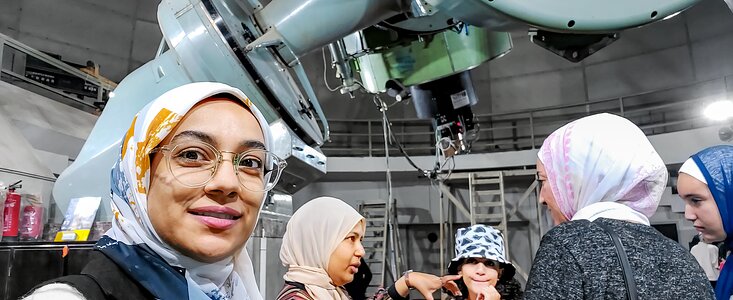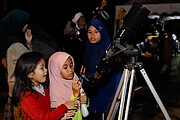- News
- Science
- Scientific Bodies
- Divisions
- Commissions
- Commission A1 Structure
- Commission A2 Structure
- Commission A3 Structure
- Commission A4 Structure
- Commission B1 Structure
- Commission B2 Structure
- Commission B3 Structure
- Commission B4 Structure
- Commission B5 Structure
- Commission B6 Structure
- Commission B7 Structure
- Commission C1 Structure
- Commission C2 Structure
- Commission C3 Structure
- Commission C4 Structure
- Commission C5 Structure
- Commission D1 Structure
- Commission E1 Structure
- Commission E2 Structure
- Commission E3 Structure
- Commission E4 Structure
- Commission F1 Structure
- Commission F2 Structure
- Commission F3 Structure
- Commission F4 Structure
- Commission G1 Structure
- Commission G2 Structure
- Commission G3 Structure
- Commission G4 Structure
- Commission G5 Structure
- Commission H1 Structure
- Commission H2 Structure
- Commission H3 Structure
- Commission H4 Structure
- Commission J1 Structure
- Commission J2 Structure
- Commission J3 Structure
- Commission X1 Structure
- Commission X2 Structure
- Past Commission Organising Committees
- Working Groups
- Centres
- Scientific Meetings
- Rules & Guidelines
- General Assemblies
- Meeting Proposals
- Future IAU Meetings
- General Assemblies
- EC Meetings
- Officers' Meetings
- Regional Meetings
- Symposia
- Focus Meetings
- Institutional Meetings
- IAU Offices Meetings
- IAU-Sponsored Meetings
- Letters of Intent submitted for 2024
- Letters of Intent submitted for 2023
- Letters of Intent submitted for 2022
- Letters of Intent submitted for 2021
- Letters of Intent submitted for 2020
- Past IAU Meetings
- Templates
- Other Meetings
- Grants & Prizes
- Scientific Bodies
- Publications
- IAU Publications
- IAU Strategic Plan
- Symposia
- WGSBN Bulletins
- Regional Meetings
- Information Bulletins/Catalyst
- E-Newsletters
- Focus Meetings
- Transactions A
- Transactions B
- Related Publications
- GA Newspapers
- CAPjournal
- IAU Books
- Brochures
- IAU Offices
- WG Reports
- Commission Reports
- Division Reports
- Past IAU Publications
- Rules, Guidelines and Instructions for Proceedings
- Publishers
- IAU Publications
- Administration
- About the IAU
- Statutes & Rules
- IAU Policies
- IAU Executive Bodies
- IAU Secretariat
- Resolutions
- Members Administration
- Administrative Dates & Deadlines
- International Organisations Relations
- Donate to the IAU
- Training in Astronomy
- Astronomy for Education
- Astronomy for Development
- Astronomy for the Public
- Office for Astronomy Outreach
- FAQ
- Themes
- Satellite Constellations
- Astronomy in Everyday Life
- How to Report a Discovery
- Careers in Astronomy
- Defining our Place in the Cosmos
- The Constellations
- Light Pollution
- Measuring the Universe
- Near Earth Objects
- How to Participate in Astronomy Research
- Naming of Astronomical Objects
- Naming of Exoplanets
- Buying Star Names
- Naming Stars
- Pluto and the Solar System
- IAU Member Statistics
- Our Moon: the Moon
- Meteors & Meteorites: The IAU Definitions of Meteor Terms
- UNESCO-IAU Portal to the Heritage of Astronomy
- Social Media
- Past Events
- Call for Online Resources
- Astronomy@Home Awards
- Contact
iau2304 — Press Release

7 June 2023
IAU Selects Names for 20 Exoplanetary Systems
— The NameExoWorlds global contest names the next set of exoplanets and host stars
The International Astronomical Union’s NameExoWorlds 2022 contest has selected 20 pairs of names for exoplanets and their host stars. The contest was organised within the framework of the celebrations of the 10th anniversary of the IAU Office for Astronomy Outreach (OAO). With 603 entries from 91 countries, the campaign attracted over 8800 individuals working in teams, who put forward outreach initiatives that stimulated the direct participation of almost 12 million people worldwide.
The NameExoWorlds 2022 contest was set up to recognise and honour the efforts of the people who have been making it their life’s work to popularise astronomy in an accessible and public-friendly way to their communities. The contest was open to anyone to form a team, implement an astronomy outreach event and propose a name for one of the 20 exoplanetary systems, each with one known exoplanet and its host star. The star and planet names were to be connected by a common theme, allowing other planets, if discovered in future, to be named following the same theme. These 20 systems were selected as they were among the first exoplanetary systems targeted for observations by JWST [1].
The contest attracted over 8800 professional and amateur astronomers, students and teachers, and astronomy enthusiasts in teams that hosted astronomy events. From intimate events for neighbours to large online lectures, the astronomy outreach events created for NameExoWorlds 2022 showcased the diversity and creativity that is possible in astronomy outreach practices. For example, students from the JaHo School in Taipei created a participatory game that helped the public engage with the JWST [1], while students at Chittagong International School in Bangladesh created a gender-inclusive, week-long festival that included exhibitions, Q&A sessions, and film screenings.
Through the NameExoWorlds initiatives, the IAU recognises the importance of the connections between the sky and our diverse cultures. In recognition of this link and of the UN International Year of Indigenous Languages 2019, speakers of Indigenous languages were encouraged to propose names from those languages. Seven of the selected names are of Indigenous etymology.
The newly adopted names [2] honour native fauna and flora with cultural significance, for example, Batsũ̀ (LHS 3844) & Kua'kua (LHS 3844 b), from Costa Rica, are the words in Bribri Language for hummingbird and butterfly; while Wattle (WASP-19) & Banksia (WASP-19 b), and Añañuca (GJ 367) & Tahay (GJ 367 b) are names of native flora of Australia and Chile, respectively, whose characteristics allude to the properties of the celestial objects. Selected names also highlight significant geographical landmarks: Zembra (HATS-72) & Zembretta (HATS-72 b) are UNESCO biosphere reserves in Tunisia, while Wouri (WASP-69) is a river in Cameroon & Makombé (WASP-69 b) its tributary.
Some names also celebrate literary works, such as Kosjenka (WASP-63) & Regoč (WASP-63 b), which refer to the work of Croatian writer Ivana Brlić-Mažuranić, and Filetdor (WASP-166) & Catalineta (WASP-166 b) which refer to Mallorcan folktales recorded by writer Antoni Maria Alcover i Sureda. Other names celebrated folktales, mythologies and lore from around the world, including words in Maa, Cherokee, Taino, Zoque, Chinese, and Korean. The full list of selected names can be found on NameExoWorlds website.
Several notable exoplanets were named in this campaign. The benchmark transiting exoplanet GJ 1214 b — one of the most-studied ‘sub-Neptune’ planets intermediate in size between Earth and Neptune — received the name Enaiposha, which refers to a large body of water like a lake or sea in the Maa language of Kenya and Tanzania. Two well-studied hot-Neptune exoplanets, designated GJ 436 b and GJ 3470 b, that orbit very close to their stars, but on highly inclined orbits nearly perpendicular to their star’s equator, and show observational evidence for evaporating atmospheres, were also named. GJ 436 b was named Awohali — Cherokee for eagle — referring to a legend in which an eagle was sent to the Sun by a warrior to deliver a prayer. GJ 3470 b was named Phailinsiam — Thai for blue Siamese sapphire — alluding to the blue colour of the planet inferred from the detection of Rayleigh scattering in its atmosphere. The recently discovered hot sub-Earth-sized exoplanet GJ 367 b orbits its star every eight hours, and has a density that suggests it is a very iron-rich planet like Mercury. It has been named Tahay, after a flower that blooms for only about eight hours every year, similar to the length of the ‘year’ for this ultra-short-period planet. Awohali, Phailinsiam, Tahay all orbit nearby red dwarf stars within 33 light-years of Earth.
At the core of the decision process to select these 20 names were members of the Executive Committee WG Exoplanetary System Nomenclature [3], in consultation with the discoverers of the planets, who joined for the selection of the new names from 134 national entries [4].
Eric Mamajek, chair of the NameExoWorlds 2022 campaign, noted, “The thoughtful names for these recently discovered planets and their stars, show that IAU public naming campaigns can draw upon the imagination of people around the world.”
Debra Elmegreen, IAU President, remarked, “Congratulations to those who proposed winning names for these exoplanetary systems, and to everyone who entered. This large engagement of school children, the public, and professional astronomers in the competition is a fitting tribute to the efforts of the IAU Office for Astronomy Outreach over the past decade. Many thanks to the Working Group on Exoplanetary System Nomenclature and the OAO for running the competition.”
Notes
[1] The systems selected in 2022 are of special interest, as they are among the first exoplanet targets of the JWST. This international space observatory, led by NASA with its partners, the European Space Agency and the Canadian Space Agency, saw first light in July 2022. The newly named exoplanets have been discovered via a mix of techniques, mostly the transit method, direct imaging, and radial velocity method.
[2] The winning names will not replace the scientific alphanumeric designations, which already exist for all exoplanets and their host stars, but they will be sanctioned as IAU-adopted names and will be publicised as such. Due credit will be given to the communities that proposed them. These public names may then be used freely worldwide, along with, or instead of, the original scientific designation.
[3] The Executive Committee WG Exoplanetary System Nomenclature is an IAU Working Group tasked with providing advice on guidelines for the naming of exoplanets and their host stars, as well as supporting the IAU’s public naming campaigns for exoplanetary systems.
[4] The lead author of the discovery paper for the exoplanet, or a coauthor (either delegated by the first author, or selected by the panel if the first author did not respond), was invited by the panel to participate in the NameExoWorlds 2022 campaign. They were given the choice of either providing input to the panel on the naming selection (after reviewing the leading naming proposals for that system) or participating on a team that proposed names for the system — but they could not do both. Most elected to provide input to the panel on the top proposals for a particular system from the various national campaigns.
More information
The IAU is the international astronomical organisation that brings together more than 12 000 active professional astronomers from more than 100 countries worldwide. Its mission is to promote and safeguard astronomy in all its aspects, including research, communication, education and development, through international cooperation. The IAU also serves as the internationally recognised authority for assigning designations to celestial bodies and the surface features on them. Founded in 1919, the IAU is the world's largest professional body for astronomers.
The IAU Office for Astronomy Outreach (OAO) is a joint project of the International Astronomical Union (IAU) and the National Astronomical Observatory of Japan (NAOJ). The mission of the OAO is to engage the public in astronomy through access to astronomical information and communication of the science of astronomy. This is implemented through a network of IAU National Outreach Coordinators (NOCs) and the IAU’s public engagement initiatives. The work of the OAO is about building bridges between the IAU and the global astronomy community of amateur astronomers, outreach professionals, educators, communicators, and the general public, and through international collaboration, to make the science of astronomy accessible to all.
Links
- NameExoWorlds 2022 Information
- Executive Committee WG Exoplanetary System Nomenclature
- IAU Office for Astronomy Outreach
- NameExoWorlds 2019 Edition
- NameExoworlds 2015 Edition
- NASA Exoplanet Archive
Contacts
Lina Canas
IAU OAO Director, NameExoWorlds 2022 Coordinator
IAU Office for Astronomy Outreach
Tel: +81 (0)422 34 3966
Email: lina.canas@nao.ac.jp
Suzana Filipeki Martins
OAO International Outreach Officer, NameExoWorlds 2022 Project Manager
IAU Office for Astronomy Outreach
Tel: +81 (0)422 34 3966
Email: suzana.filipeki@oao.iau.org
Gonzalo Tancredi
Chair of the Executive Committee WG Exoplanetary System Nomenclature
Departamento de Astronomía, Facultad de Ciencias, Udelar, Uruguay
Tel: +598 99 927 446
Email: gonzalo@fisica.edu.uy
Eric E. Mamajek
Chair of NameExoWorlds 2022 Campaign
Jet Propulsion Laboratory/California Institute of Technology, Astrophysics & Space Sciences Section, USA
Cell: +1 818 354 2153
Email: mamajek@jpl.nasa.gov
Lars Lindberg Christensen
IAU Director of Communications
Tel: +1 520 461 0433
Cell: +49 173 38 72 621
Email: lars.christensen@noirlab.edu



